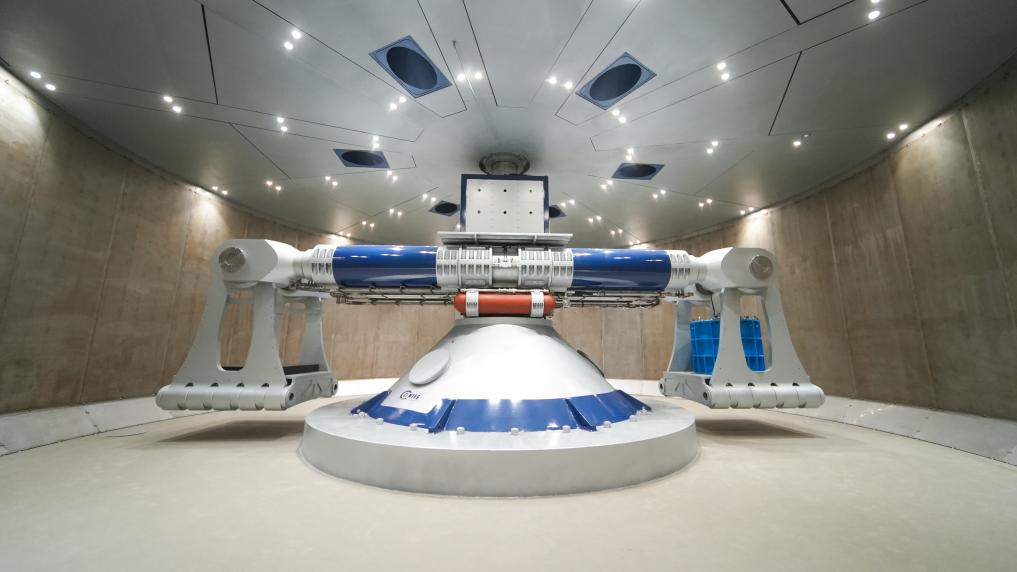In a dramatic leap for experimental science and engineering, China has officially unveiled the world’s most powerful centrifuge, capable of generating extreme gravitational forces never before achieved in a laboratory setting. The new facility, called the Centrifugal Hypergravity and Interdisciplinary Experiment Facility (CHIEF), is located in Hangzhou, Zhejiang Province, and is designed to simulate physical environments many times more intense than anything found naturally on Earth.
At the heart of this scientific complex lies the newly completed CHIEF1300, a colossal centrifuge capable of producing gravitational forces up to 300 times Earth’s gravity (300 g) while supporting experimental payloads weighing up to 20 metric tons. Scientists say this hypergravity environment will enable groundbreaking research across fields as diverse as geophysics, ocean engineering, materials science, and planetary exploration.

A New Era of Gravity Simulation
The CHIEF1300 centrifuge operates on a rotating arm with a radius of 6.4 meters, housed deep underground within a specially designed vacuum chamber to minimize air resistance and reduce mechanical stress. The centrifuge can be accelerated to high rotational speeds, generating controlled hypergravity environments for experimental testing.
Unlike traditional laboratory tools, CHIEF1300 enables researchers to replicate processes that would take decades or even centuries to occur under normal gravity. For example, soil or sediment movement under gravitational compression that might take 100 years in nature can be observed in a matter of days. Similarly, engineers can test how structures respond to gravitational forces far exceeding what would be experienced during earthquakes, landslides, or oceanic subduction events.
Scientific and Industrial Applications
The scope of CHIEF’s research potential is vast. For geotechnical engineers, the centrifuge offers a way to simulate how foundations of large dams or skyscrapers would behave under intense seismic stress or heavy sediment load. Environmental scientists can observe pollutant transport in groundwater systems over compressed timeframes. Materials scientists are already using the centrifuge to explore the formation of metal alloys in hypergravity, which can reduce defects and improve uniformity in materials subjected to extreme conditions.
Another striking application involves simulating deep-sea pressure environments. By combining hypergravity with specialized fluid chambers, the facility can reproduce conditions found 2,000 meters below the ocean’s surface. This opens new possibilities for studying methane hydrates, deep-sea ecosystems, and offshore oil and gas operations.
CHIEF1300 is also expected to play a critical role in planetary science. Simulating the gravity levels of larger planets or the forces generated during asteroid impacts can help researchers model extraterrestrial environments without leaving Earth. In time, these experiments could support the design of future space missions or extraterrestrial construction technologies.
Engineering Feats and Challenges
Building a centrifuge of this scale and precision has required overcoming enormous engineering challenges. One of the most significant is maintaining the structural integrity of the centrifuge while it experiences extreme mechanical stress during operation. Even the smallest imbalance at such high rotational speeds can lead to catastrophic failure. To address this, the system uses highly specialized alloys and precision manufacturing techniques, alongside a sophisticated monitoring system that can detect the slightest anomalies in real time.
Thermal management is another key concern. As the centrifuge spins, friction and air resistance—even in vacuum conditions—generate heat that must be dissipated to avoid damage to the system or the experiment. CHIEF1300 incorporates advanced cooling systems to ensure stable operation over long experimental runs.
To handle the enormous data produced by such experiments, the facility is equipped with high-speed data acquisition and visualization tools, allowing scientists to analyze results in detail immediately after tests conclude.

A Platform for Global Research
While the CHIEF facility is a national project, Chinese officials have emphasized that it is intended to serve as an open and collaborative platform for the global scientific community. International researchers are being invited to propose experiments and partnerships across a wide array of disciplines. The goal, according to project leaders, is to make CHIEF a hub for cutting-edge experimental science and a catalyst for global innovation.
Beyond CHIEF1300, the facility will eventually include two additional large centrifuges, multiple in-flight experimental setups, and six specialized research cabins. These installations are currently under development, with the entire facility expected to be fully operational within the next year.
Looking Ahead
The debut of the world’s mightiest centrifuge marks a new chapter in high-gravity research and experimental simulation. By compressing natural timescales and magnifying physical forces, CHIEF will allow scientists to explore phenomena previously inaccessible to direct observation or experimentation.
From strengthening infrastructure against natural disasters to designing materials for the harshest environments known to science, the potential applications of this technology are wide-ranging and transformative.
As the facility moves into full operation, China positions itself at the forefront of global experimental research — not by venturing into space, but by building a universe of extreme physics right here on Earth.












